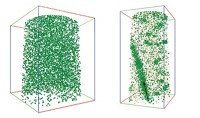Advertisement
Grab your lab coat. Let's get started
Welcome!
Welcome!
Create an account below to get 6 C&EN articles per month, receive newsletters and more - all free.
It seems this is your first time logging in online. Please enter the following information to continue.
As an ACS member you automatically get access to this site. All we need is few more details to create your reading experience.
Not you? Sign in with a different account.
Not you? Sign in with a different account.
ERROR 1
ERROR 1
ERROR 2
ERROR 2
ERROR 2
ERROR 2
ERROR 2
Password and Confirm password must match.
If you have an ACS member number, please enter it here so we can link this account to your membership. (optional)
ERROR 2
ACS values your privacy. By submitting your information, you are gaining access to C&EN and subscribing to our weekly newsletter. We use the information you provide to make your reading experience better, and we will never sell your data to third party members.
Physical Chemistry
Properties Depend On Cluster Size
Numbers of edge atoms dictate physical and chemical properties of nanoparticles
by Mitch Jacoby
January 11, 2007

What a difference a few atoms can make.
Tiny variations in the numbers of atoms along the edges of molybdenum disulfide nanoparticles can profoundly influence the crystal's atomic-scale structure and coordination, electronic properties, and other characteristics, researchers in Denmark have shown. The findings may lead to improvements in MoS2-based desulfurization catalysts for fuel cleanup and to advanced lubricants and other applications.
With legislation in the U.S., Europe, Japan, and elsewhere calling for ever lower levels of sulfur in transportation fuels, scientists are redoubling their efforts to sort out the reaction mechanism that drives hydrodesulfurization, a process in which sulfur is stripped from hydrocarbons and converted to volatile hydrogen sulfide in the presence of MoS2-based catalysts.
Previous studies indicate that the edges of thin, supported MoS2 nanoclusters, which are often equilateral-triangular in shape, contain highly active catalytic sites, which are especially active when the clusters are very small. The high activity is often attributed to the unique coordination of edge atoms and the presence of reactive edge defect sites. But those features have not been explored in atomic-resolution detail until now.
On the basis of scanning tunneling microscopy (STM) measurements, Aarhus University physics professors Jeppe V. Lauritsen and Flemming Besenbacher and their coworkers at Aarhus and at catalyst manufacturer Haldor Topsøe have shown that nanoclusters with six or more molybdenum atoms along an edge coordinate sulfur differently than do nanoclusters containing fewer than six edge molybdenum atoms. Specifically, the team finds that along the edges of the larger crystallites, each Mo atom bonds with two outermost S atoms (S "dimers"), which tend to line up with neighboring atoms to form pairs of S "dimers." In contrast, the edges of smaller clusters exhibit Mo–S–Mo bridge structures (Nat. Nanotechnol. 2007, 2, 21). The team also reports that the smaller clusters are less stable (more reactive) and more prone to vacancy defects than the larger clusters. And they note size-dependent differences in the clusters' STM signatures, which indicate the clusters' differing electronic structures.
In an accompanying commentary, Gotthard Seifert, of the Technical University of Dresden, and Sibylle Gemming, of the Rosendorf Research Center, both in Germany, note that the difference between the large and small nanoclusters "turns out to be the key to understanding the structural, electronic, and catalytic properties of these particles."



Join the conversation
Contact the reporter
Submit a Letter to the Editor for publication
Engage with us on Twitter